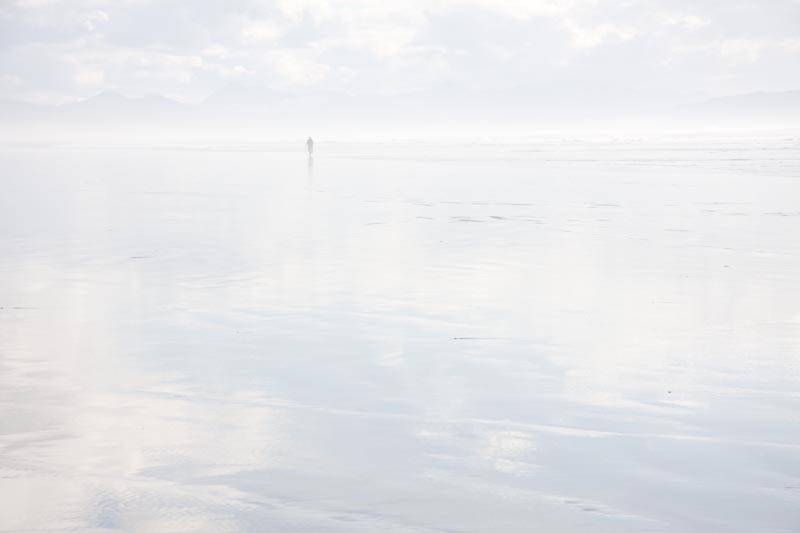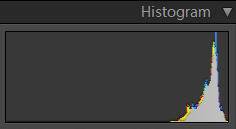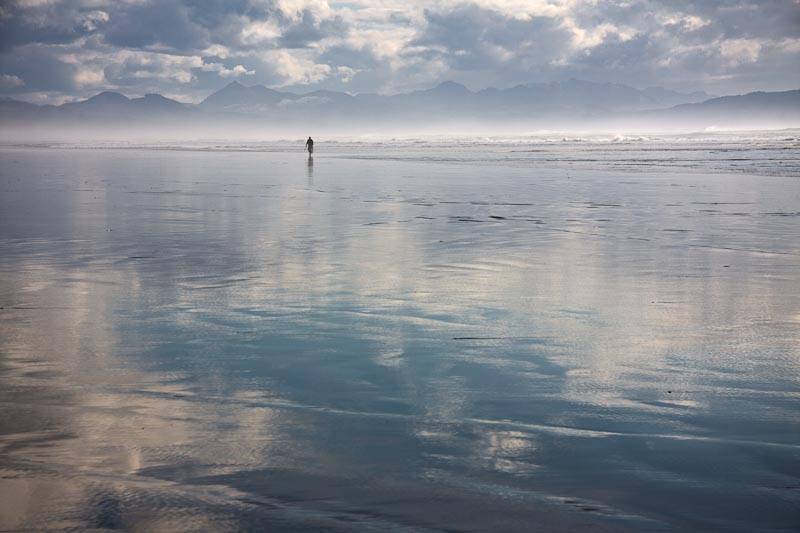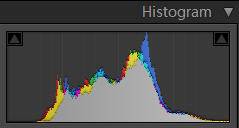I wrote about the importance of exposing as brightly as possible, short of blowing out important highlights in my post “What Lurks in the Shadows: The Case of the Black Cat“. I encourage you to read it if you haven’t.
I thought I would show you an example of a perfect exposure that in fact looks terrible in-camera.
Here is a photograph I took on the Oregon Coast:

The Beach — As Shot
And here is the histogram:

A Perfect Exposure
I nailed the exposure on this one — the histogram is as far to the right as possible without anything being blown out. But on the back of the camera the shot looks terrible!
Of course I didn’t worry, because I knew that I captured very high quality information in that right side of the histogram, and I can add lots of contrast and darken the image without worrying about noise and other data issues. Simply spending 30 seconds on the image in Lightroom, bringing the blacks slider to the right, adding a ton of contrast and reducing brightness gave me this:

The Beach After a Few Adjustments

Histogram after Processing
The bottom line: if you try to darken something that is too bright, you will find that the image holds up quite well. If instead you try to brighten something that you have underexposed, you will find that noise that lurks in the shadows, as I show in my Cat post.
Do try this at home!
UPDATE: A reader asked me if I would show how I developed this image. Click here for a video demonstration of how I developed it. (This was developed using Lightroom 3.)
[sc:signup]